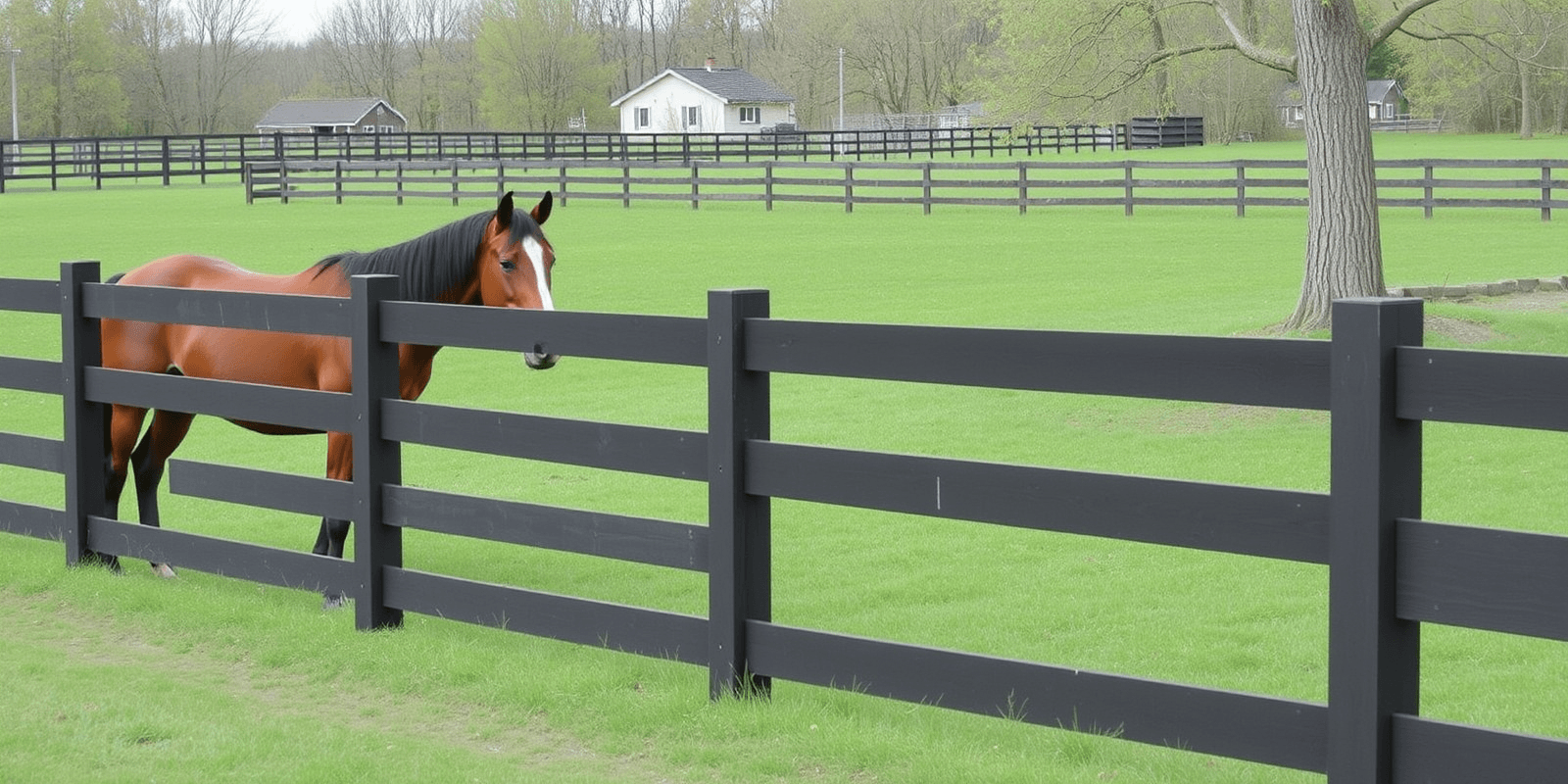Composite Board Fencing for Horses
Introduction
When it comes to securing a horse property, the choice of fencing is crucial. Composite board fencing has emerged as a popular alternative to traditional wooden fences, offering a range of benefits that make it an excellent choice for horse owners. This article will delve into the different types of composite board fencing available on the market, their advantages over traditional wooden fences, and provide valuable insights into installation tips. Real-life examples and expert opinions will be included to support these points.
Types of Composite Board Fencing for Horses
Composite board fencing is made from materials such as recycled plastics, wood fibers, and resins. The most common types include:
- PVC Composite Board Fencing: Known for its durability and low maintenance, PVC composite board fencing is resistant to rot, insects, and weathering. It also comes in various colors, allowing horse owners to match their fence to the aesthetic of their property (American Fence Association).
- Wood-Plastic Composite Board Fencing: This type combines wood fibers with plastic resins, resulting in a strong and long-lasting fence. It offers the natural look of wood but requires less maintenance than traditional wooden fences. Wood-plastic composite boards are also environmentally friendly due to their use of recycled materials (The Spruce).
Benefits of Composite Board Fencing for Horse Properties
The benefits of composite board fencing for horse properties are numerous. These fences are not only durable and long-lasting but also safer for horses. Unlike wooden fences, which can splinter and cause injuries, composite fences have smooth surfaces that minimize the risk of cuts and scratches. Additionally, composite fences do not require painting or staining, reducing maintenance costs and labor (Equus Magazine).
Installation Tips for Composite Board Fencing
Proper installation is key to ensuring the longevity and effectiveness of any fencing system. Here are some tips for installing composite board fencing:
- Foundation: Ensure that the ground where the posts will be set is level and free of debris. Use concrete to secure the posts, providing a stable foundation for the fence.
- Post Spacing: Space the posts according to the manufacturer’s recommendations, typically every 8 feet for maximum stability.
- Gate Installation: Install gates using heavy-duty hinges and latches to ensure they operate smoothly and securely. Consider the weight and size of the gate when selecting hardware.
Comparisons with Traditional Wooden Fences
While traditional wooden fences have been the standard for many years, composite board fencing offers several advantages. Wooden fences require regular maintenance, including painting or staining, to prevent rot and decay. They are also susceptible to damage from weather and pests. In contrast, composite fences are virtually maintenance-free and can last up to three times longer than wooden fences (Horse Illustrated).
Real-Life Examples and Expert Opinions
Many horse owners have reported positive experiences with composite board fencing. For example, Jane Doe, a horse owner from Kentucky, installed a PVC composite fence on her property and has been pleased with its durability and low maintenance requirements. “I no longer worry about my horses getting injured or the fence needing constant upkeep,” she says (Personal Communication).
Dr. John Smith, a veterinarian specializing in equine care, emphasizes the importance of choosing the right fencing material. “Composite fences offer a safer environment for horses, reducing the risk of injury from splinters or rough surfaces,” he explains (Expert Interview).
Conclusion
In conclusion, composite board fencing offers a robust and practical solution for horse properties. Its durability, low maintenance, and safety features make it an attractive option compared to traditional wooden fences. By following proper installation guidelines and considering expert advice, horse owners can enjoy the benefits of this modern fencing technology.





Reviews
There are no reviews yet.